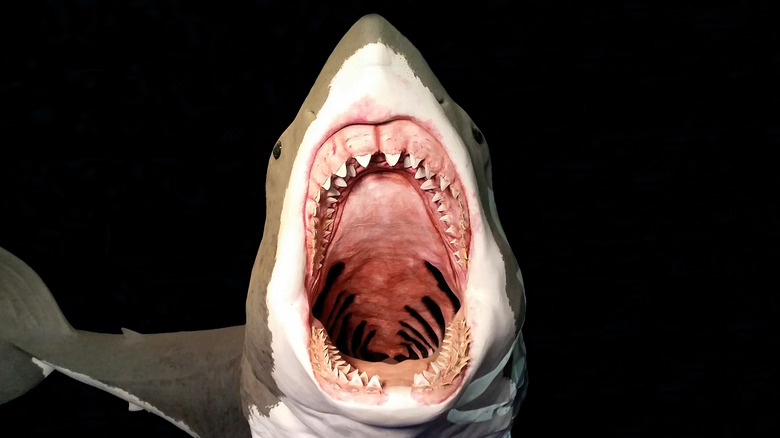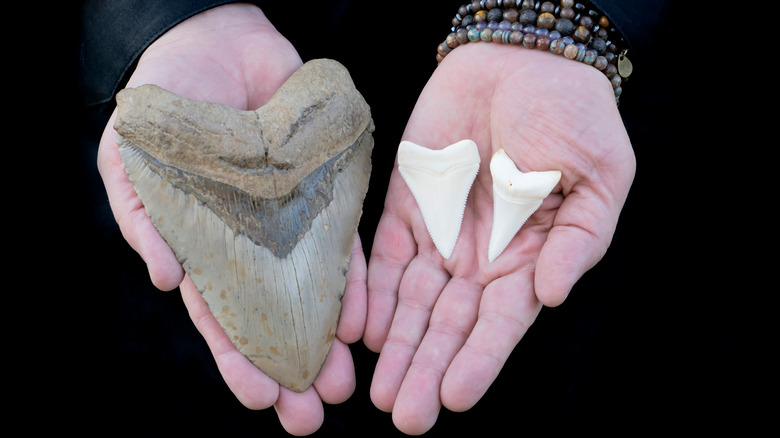Here's How Big Megalodon Sharks Really Were
The megalodon shark has been the subject of movies and documentaries, and although it has been extinct for millions of years, the sheer size of the sea creature can scare people and prevent them from going into the ocean. The megalodon was the biggest shark known to have roamed the ocean, and scientists have studied fossils and megalodon teeth to learn more about the creature.
According to scientific research, as reported by The Conversation, the megalodon swam in the oceans for millions of years before they went extinct at the end of the Pliocene Epoch, a time when the earth began to cool after the warm Miocene period. The name megalodon was derived from the Greek language and means "giant tooth." The name is fitting, as scientists use megalodon teeth to make an estimation of how large the sea creatures were.
Since most studies of the megalodon revolve around their teeth, researchers also use existing sharks to create a picture of what the megalodon looked like. Fossilized megalodon teeth are the most common parts found as sharks reportedly go through thousands of teeth in their lifetime, as reported by the Natural History Museum. When their teeth fall off, the teeth fall to the ocean floor and become fossilized. However, researchers have also come across rare megalodon vertebrae that have been fossilized.
Features of the megalodon
The megalodon had large serrated teeth (at left, above, compared with a great white shark's tooth), allowing them to prey on large ocean creatures. An average megalodon tooth measures anywhere from five to seven inches, which is three times the size of the teeth of great white sharks today. Not only that, their jaws consisted of more than 250 teeth, making them dangerous predators.
In 2020, researchers from Swansea University and the University of Bristol calculated the size of the megalodon based on its teeth. Their report indicated that a full-grown megalodon reached 18 meters (59 feet) long, with a weight of 48 tons, as reported by CNN. Its fin alone was the size of an adult human at 5.3 feet, and one tooth was the size of a human hand.
The Smithsonian Museum has a model of the megalodon that measures 52 feet and was constructed based on a tooth found in Florida. According to Smithsonian Magazine, the megalodon's closest living relative is the mako shark, but according to museum curator Hans-Dieter Sues, "A mako shark would look puny next to a megalodon."
Shark Week airs July 11-18 on Discovery and discovery+.

